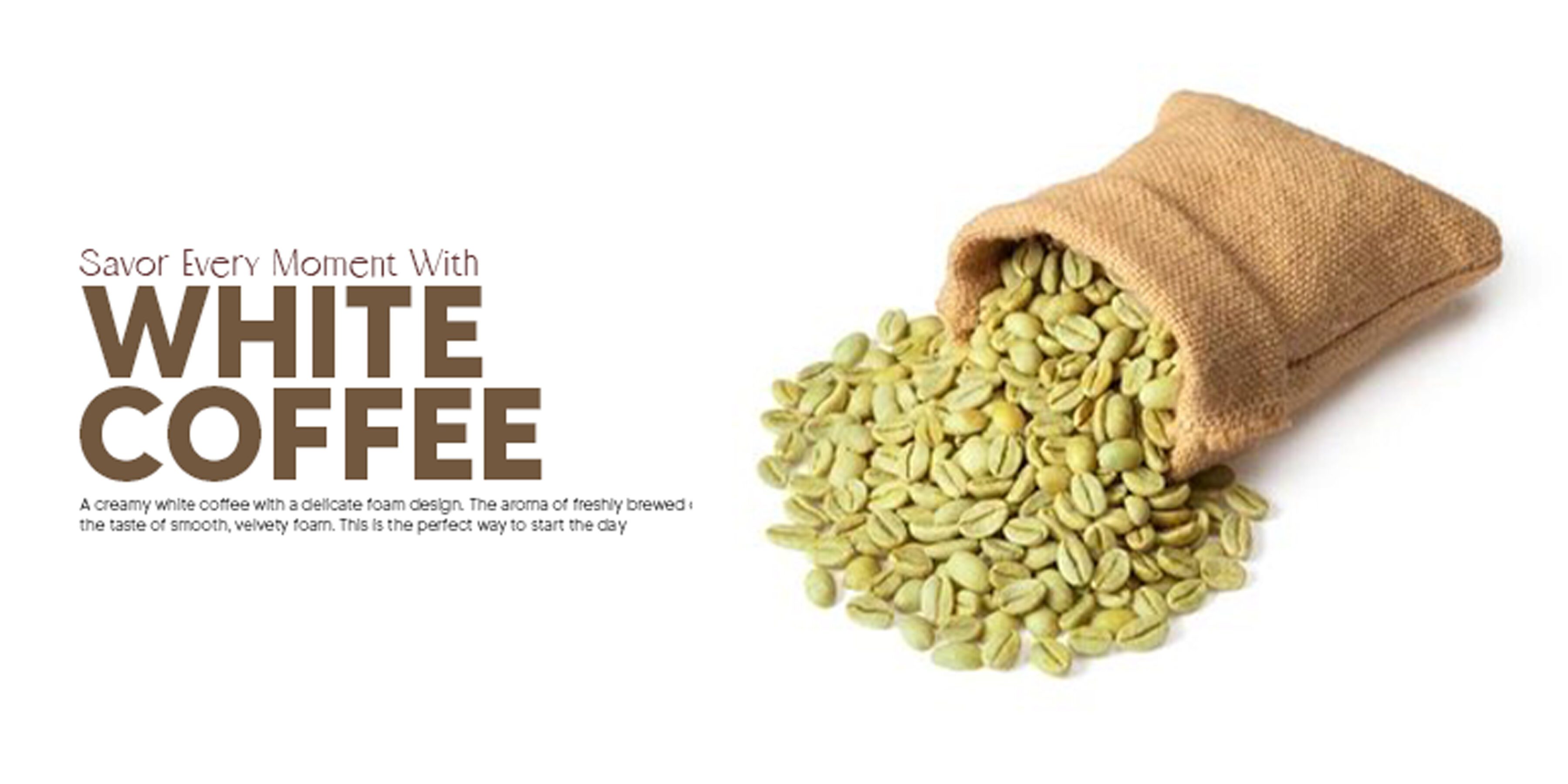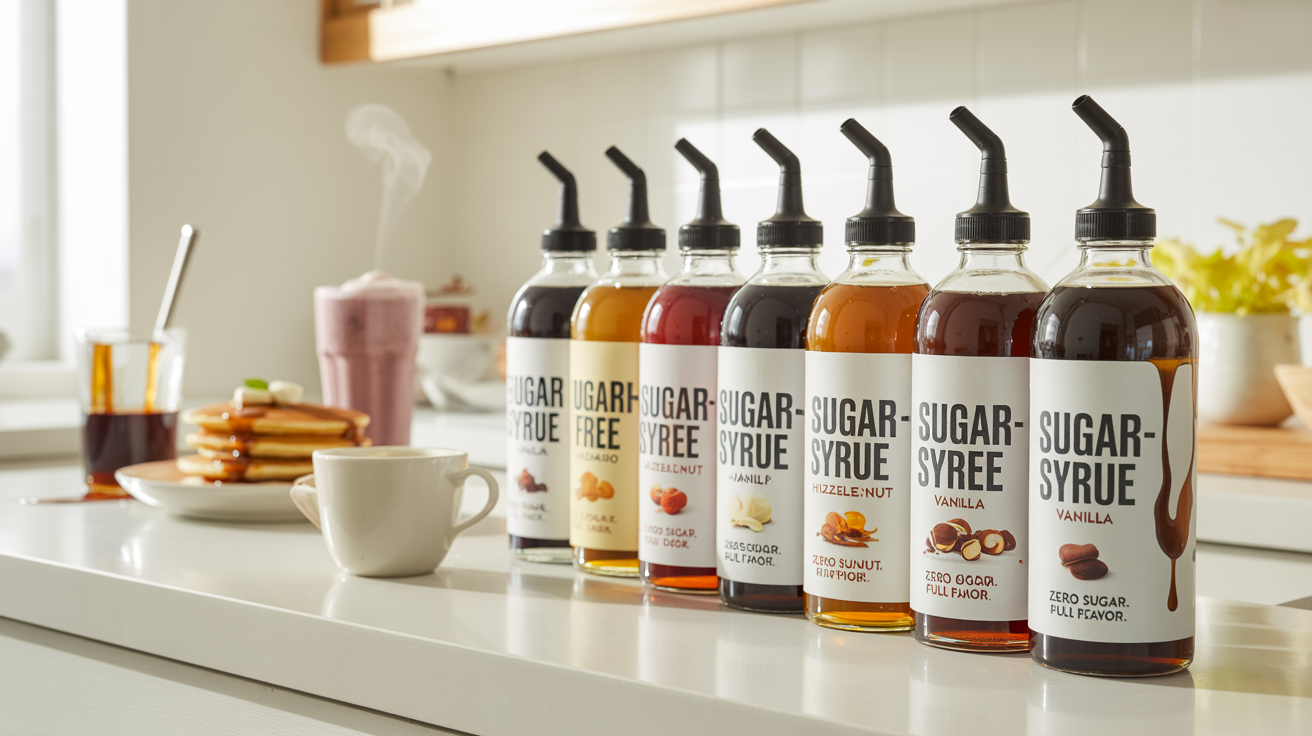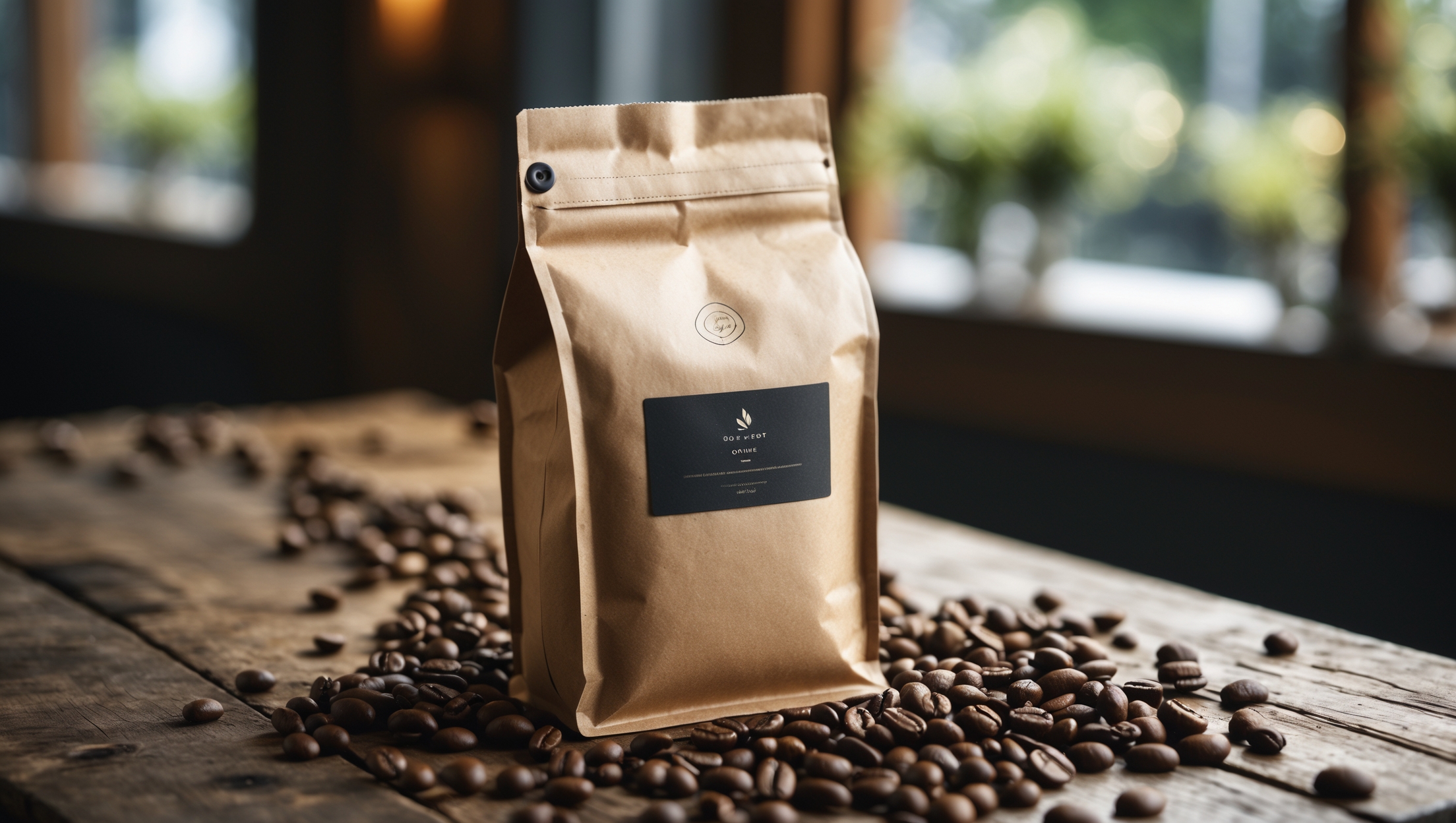5 Surprising Benefits of Drinking Breve Coffee Daily 5 Surprising Benefits of Drinking Breve Coffee Daily Introduction Briefly introduce what...
Read MoreWhite Coffee: The Unique Brew You Need to Try Today

Experience the Smooth Taste of White Coffee: Your New Favorite Drink!

Experience the Smooth Taste of White Coffee: Your New Favorite Drink!


A brief introduction to white coffee
It features a unique method of preparation as well as a distinct flavor. This contrasts with regular coffee that is roasted at a higher temperature. White coffee beans are finely roasted to result in a mild taste with a pale white/grey color. This remarkable beverage is from Malaysia and is now consumed around the world for its high caffeine and nutritional value. On top of that, colorless coffee can be enjoyed with a splash of condensed milk, or it can be used on its own as a base for other coffee combinations. Thus, go ahead and learn all there is to know about white coffee.
Importance of understanding its unique characteristics in the coffee world
If you are an enthusiast of coffee, for instance, it is important to understand the nuances of various types of coffee including white coffee. However, its contributions are just a small fraction of what these diverse beans bring to the world of coffee. Understanding these differences will help consumers make informed choices that may improve their drinking experience. The colorless coffee that is roasted lightly maintains more nutrients and has a smoother flavor that can be attractive to people not searching for traditional coffee. Whether it’s a coffee connoisseur’s attention to detail or an enthusiast learning new brewing styles, these traits enhance the comprehension and appreciation of coffee.
What is White Coffee?
Explain the processing method.
It’s this unexpected process that makes white coffee unusual. In this instance the coffee beans are roasted at a low temperature so they remain a light brown colour. This type of moderate roasting helps retain the natural oils and nutrients in the beans, resulting in a light color and milder flavor. Whereas white coffee are colorless and light tan, traditional coffee has been roasted until it has a dark brown color. It begins with farm workers selectively hand-picking the best arabica beans, which then painstakingly roast for 30 minutes. This controlled process results in higher levels of caffeine but also a lighter taste, which are features that some folks may look for in a coffee substitute.
Contrast with traditional coffee (black coffee)
White coffee (similar to how white bread is different from whole-grain bread) is as far from regular black coffee as you can get. Black coffee is made from beans that have been roasted to a dark brown, resulting in a strong, robust taste, while colorless coffee is barely-tinted and delivers a smooth flavor. Because it’s a lighter roast, colorless coffee retains more of the natural oils and caffeine extracted from the beans, giving it its own flavor profile. Plus you can add sugar or milk, making it way more versatile than black coffee. When you understand these differences, you will understand and therefore appreciate both styles more.
Brief history and origin of white coffee
This coffee was invented in Malaysia and became really popular in the late 1800s. The roasting process is done at a lower temperature and yields beans that are much lighter in both color and flavor. The name alludes to how the coffee is served, usually with sweetened condensed milk, yielding a creamy hue. White coffee has caught on in a big way overseas in recent years and people like the more subtle flavor and up in caffeine levels. Today, it has kept pace with coffee to become a worthy rival, acclaimed for its unique characteristics and deep cultural history.

Description of white coffee beans
Types of beans used
Producers make white coffee from Arabica beans, although they often include some Robusta beans. Both coffee types provide their unique qualities and flavors. Coffee enthusiasts prefer Arabica’s soft, muted flavor for colorless coffee because it maintains subtlety during quick roasting. The resulting brew has a lightly colored aspect and highlights the beans’ inherent sweetness and delicate hints. Brewers choose Robusta for its strong taste, high caffeine, and earthy tones when craving a robust coffee. Knowing the beans aids in appreciating the various aspects and riches of white coffee’s flavor palette.
Unique roasting process
White coffee is distinctly different than regular coffee due to its roasting process. In stark contrast to deep roasting for black coffee, colorless coffee beans undergo very low-temperature roasting (approx 300°F /150°C). This gentle process retains the beans’ natural oils and nutrients, producing a milder flavor and light color. Roasters roast it for much less time, around 30 minutes, which preserves the bean’s higher caffeine levels while allowing them to retain a smoother, slightly sweeter taste. This unique process is what separates colorless coffee from the art of delivering this much-loved beverage.
Nutritional benefits and Flavor Profile of white Coffee beans
They offer distinct nutritional and taste properties that appeal to coffee enthusiasts. This light roast process will also leave more antioxidants and nutrients than dark roasted coffee has it in. White coffee has a higher caffeine content, which is why it will enhance your digestion and will make you feel more awake, and is also healthy. Taste-wise, colorless coffee is mild and nutty with hints of sweetness and none of the bitterness of a dark roast. Its mild profile pairs well with milk and sugar, making it a comfortable coffee for anyone in the world.
How to Prepare White Coffee
Step-by-step guide on brewing white coffee
You will need the equipment and ingredients important for a good cup of white coffee. You’ll also need a coffee grinder, a French press, a drip coffee maker, or an espresso machine, depending on how you prefer to brew. Essential elements of the drink are colorless coffee beans, ground fresh for maximum taste, and milk, sweetened condensed milk, or sugar for a creamy, sweet element. Choose the medium-fine beans to grind and brew as preferred. Follow a step-by-step guide suited to your equipment, and in minutes, you will be enjoying the nutty and smooth flavor of colorless coffee!
Tips for the perfect cup of white coffee
Here are some top tips for brewing the best white coffee possible. Use high-quality colorless coffee beans and grind them immediately before brewing so they stay fresh and flavorful. You can rely on the right temperature water (ideally between 190°F to 205°F (88°C to 96°C), which will extract the coffee’s well-being little nuances without bitterness. Play around with all of your different brewing methods, like a French press or drip coffee maker, to see what your go-to style is. Change the coffee-to-water ratio according to your taste, usually about 1:15. Finally, round out your cup with milk or sweeteners to match the subtle, nutty taste of white coffee.

Define black-white coffee
Explain the differences and similarities between black coffee and white coffee.
Black coffee and white coffee are not just two different drinks, though: They’re also something else. Coffee is produced with dark-roasted as black beans, having a strong and rich taste and dark brown color. Clear coffee is made from lightly roasted beans, which have a light taste and color. Both drinks are also caffeine, but all else equal, clear coffee has even more, thanks to differences in roasts. It is therefore prepared more “straight up”, colorless coffee is often made with milk/sugar. But both styles are a nod to its storied past and complement different tastes.
When to choose black coffee over white coffee and vice versa
Flavor profiles and preferences ultimately determine when one chooses black versus white coffee. If you enjoy a powerful, intense flavor with a strong, earthy undertone, then a cup of black coffee is a great choice – especially for those who love darker roast coffees. On the other hand, choose colorless coffee if you prefer a gentler, smoother drink with nutty notes and sweetness. Colorless coffee’s distinctive profile is an excellent choice for those who enjoy cream-based beverages or want to experience colorless without the bitterness and acidity found in traditional brews. Identifying your own taste preferences can help you know the best choice for a proper cup at whatever time!
Health Benefits of White Coffee
Potential health advantages of drinking white coffee
There are several health benefits of drinking white coffee that make it an excellent option for coffee aficionados. Finally, colorless coffee is beneficial because it is roasted at lower temperatures. This enables the beans to preserve a greater volume of antioxidants, which are imperative for living and reduce cellular aging in the body. Furthermore, this noted increase in caffeine concentration could also amplify the capacity for mental concentration and increase metabolism. The level is lower in colorless coffee, which is good for people who have to steer clear of acidity. Colorless coffee can also be a tasteful means of consuming coffee in your diet without the risk of adverse effects.
Comparison with regular black coffee benefits
The comparison of white coffee with black coffee shows that each has its benefits. White coffee has more nutrients and antioxidants than black due to its gentler roasting process. Moreover, it helps digestion and improves general well being. White coffee has a higher energy concentration resulting in greater levels of alertness when compared to black coffee. On the other hand, black coffee has more taste and fewer calories, making it highly drinkable for people who want an effortless boost of energy. Both can enhance metabolism making weight loss easier, but white coffee is gentler on the stomach which makes it the preferred option for more sensitive individuals.
Recap the key points discussed.
The preceding statement explains that today’s white coffee distinguishes itself from processes of light roasting, which yield a milder flavor and greater caffeine levels compared to conventional black coffee. Also covered were its many nutritional benefits, which include powerful antioxidants and a lower pH, allowing stomach or gut sensitivities to use colorless coffee. This topic also included important equipment and ingredients, including tips for the perfect brew. The difference and similarities between white and black coffee allows consumers to choose according to their flavor and health requirements. It is apparent that both types of drinks have their unique merits accommodating to a wide range of coffee enthusiasts across the globe.
Popular Posts
How to Make Almond Syrup at Home (Better Than Store-Bought!)
Crafting Homemade Almond Syrup – A Step-by-Step Guide with Pro Tips Crafting Homemade Almond Syrup – A Step-by-Step Guide with...
Read MoreAmaretto Coffee: A Sweet, Nutty Twist on Your Favorite Brew
How to Make the Best Amaretto Coffee: Delicious Recipes & Syrup Guide How to Make the Best Amaretto Coffee: Delicious...
Read MoreChristmas Coffee: Festive Flavors to Warm Your Holiday
Christmas Coffee: Delight Your Guests with These Festive Drinks Christmas Coffee: Delight Your Guests with These Festive Drinks Introduction of...
Read MoreSugar Free Syrups: Sweeten Your Drinks Without the Calories
Sugar Free Syrup: Healthier Alternatives for Sweetening Your Drinks Sugar Free Syrup: Healthier Alternatives for Sweetening Your Drinks 1. Introduction:...
Read More
A brief introduction to white coffee
It features a unique method of preparation as well as a distinct flavor. This contrasts with regular coffee that is roasted at a higher temperature. White coffee beans are finely roasted to result in a mild taste with a pale white/grey color. This remarkable beverage is from Malaysia and is now consumed around the world for its high caffeine and nutritional value. On top of that, colorless coffee can be enjoyed with a splash of condensed milk, or it can be used on its own as a base for other coffee combinations. Thus, go ahead and learn all there is to know about white coffee.
Importance of understanding its unique characteristics in the coffee world
If you are an enthusiast of coffee, for instance, it is important to understand the nuances of various types of coffee including white coffee. However, its contributions are just a small fraction of what these diverse beans bring to the world of coffee. Understanding these differences will help consumers make informed choices that may improve their drinking experience. The colorless coffee that is roasted lightly maintains more nutrients and has a smoother flavor that can be attractive to people not searching for traditional coffee. Whether it’s a coffee connoisseur’s attention to detail or an enthusiast learning new brewing styles, these traits enhance the comprehension and appreciation of coffee.
What is White Coffee?
Explain the processing method.
It’s this unexpected process that makes white coffee unusual. In this instance the coffee beans are roasted at a low temperature so they remain a light brown colour. This type of moderate roasting helps retain the natural oils and nutrients in the beans, resulting in a light color and milder flavor. Whereas white coffee are colorless and light tan, traditional coffee has been roasted until it has a dark brown color. It begins with farm workers selectively hand-picking the best arabica beans, which then painstakingly roast for 30 minutes. This controlled process results in higher levels of caffeine but also a lighter taste, which are features that some folks may look for in a coffee substitute.
Contrast with traditional coffee (black coffee)
White coffee (similar to how white bread is different from whole-grain bread) is as far from regular black coffee as you can get. Black coffee is made from beans that have been roasted to a dark brown, resulting in a strong, robust taste, while colorless coffee is barely-tinted and delivers a smooth flavor. Because it’s a lighter roast, colorless coffee retains more of the natural oils and caffeine extracted from the beans, giving it its own flavor profile. Plus you can add sugar or milk, making it way more versatile than black coffee. When you understand these differences, you will understand and therefore appreciate both styles more.
Brief history and origin of white coffee
This coffee was invented in Malaysia and became really popular in the late 1800s. The roasting process is done at a lower temperature and yields beans that are much lighter in both color and flavor. The name alludes to how the coffee is served, usually with sweetened condensed milk, yielding a creamy hue. White coffee has caught on in a big way overseas in recent years and people like the more subtle flavor and up in caffeine levels. Today, it has kept pace with coffee to become a worthy rival, acclaimed for its unique characteristics and deep cultural history.

Description of white coffee beans
Types of beans used
Producers make white coffee from Arabica beans, although they often include some Robusta beans. Both coffee types provide their unique qualities and flavors. Coffee enthusiasts prefer Arabica’s soft, muted flavor for colorless coffee because it maintains subtlety during quick roasting. The resulting brew has a lightly colored aspect and highlights the beans’ inherent sweetness and delicate hints. Brewers choose Robusta for its strong taste, high caffeine, and earthy tones when craving a robust coffee. Knowing the beans aids in appreciating the various aspects and riches of white coffee’s flavor palette.
Unique roasting process
White coffee is distinctly different than regular coffee due to its roasting process. In stark contrast to deep roasting for black coffee, colorless coffee beans undergo very low-temperature roasting (approx 300°F /150°C). This gentle process retains the beans’ natural oils and nutrients, producing a milder flavor and light color. Roasters roast it for much less time, around 30 minutes, which preserves the bean’s higher caffeine levels while allowing them to retain a smoother, slightly sweeter taste. This unique process is what separates colorless coffee from the art of delivering this much-loved beverage.
Nutritional benefits and Flavor Profile of white Coffee beans
They offer distinct nutritional and taste properties that appeal to coffee enthusiasts. This light roast process will also leave more antioxidants and nutrients than dark roasted coffee has it in. White coffee has a higher caffeine content, which is why it will enhance your digestion and will make you feel more awake, and is also healthy. Taste-wise, colorless coffee is mild and nutty with hints of sweetness and none of the bitterness of a dark roast. Its mild profile pairs well with milk and sugar, making it a comfortable coffee for anyone in the world.
How to Prepare White Coffee
Step-by-step guide on brewing white coffee
You will need the equipment and ingredients important for a good cup of white coffee. You’ll also need a coffee grinder, a French press, a drip coffee maker, or an espresso machine, depending on how you prefer to brew. Essential elements of the drink are colorless coffee beans, ground fresh for maximum taste, and milk, sweetened condensed milk, or sugar for a creamy, sweet element. Choose the medium-fine beans to grind and brew as preferred. Follow a step-by-step guide suited to your equipment, and in minutes, you will be enjoying the nutty and smooth flavor of colorless coffee!
Tips for the perfect cup of white coffee
Here are some top tips for brewing the best white coffee possible. Use high-quality colorless coffee beans and grind them immediately before brewing so they stay fresh and flavorful. You can rely on the right temperature water (ideally between 190°F to 205°F (88°C to 96°C), which will extract the coffee’s well-being little nuances without bitterness. Play around with all of your different brewing methods, like a French press or drip coffee maker, to see what your go-to style is. Change the coffee-to-water ratio according to your taste, usually about 1:15. Finally, round out your cup with milk or sweeteners to match the subtle, nutty taste of white coffee.

Define black-white coffee
Explain the differences and similarities between black coffee and white coffee.
Black coffee and white coffee are not just two different drinks, though: They’re also something else. Coffee is produced with dark-roasted as black beans, having a strong and rich taste and dark brown color. Clear coffee is made from lightly roasted beans, which have a light taste and color. Both drinks are also caffeine, but all else equal, clear coffee has even more, thanks to differences in roasts. It is therefore prepared more “straight up”, colorless coffee is often made with milk/sugar. But both styles are a nod to its storied past and complement different tastes.
When to choose black coffee over white coffee and vice versa
Flavor profiles and preferences ultimately determine when one chooses black versus white coffee. If you enjoy a powerful, intense flavor with a strong, earthy undertone, then a cup of black coffee is a great choice – especially for those who love darker roast coffees. On the other hand, choose colorless coffee if you prefer a gentler, smoother drink with nutty notes and sweetness. Colorless coffee’s distinctive profile is an excellent choice for those who enjoy cream-based beverages or want to experience colorless without the bitterness and acidity found in traditional brews. Identifying your own taste preferences can help you know the best choice for a proper cup at whatever time!
Health Benefits of White Coffee
Potential health advantages of drinking white coffee
There are several health benefits of drinking white coffee that make it an excellent option for coffee aficionados. Finally, colorless coffee is beneficial because it is roasted at lower temperatures. This enables the beans to preserve a greater volume of antioxidants, which are imperative for living and reduce cellular aging in the body. Furthermore, this noted increase in caffeine concentration could also amplify the capacity for mental concentration and increase metabolism. The level is lower in colorless coffee, which is good for people who have to steer clear of acidity. Colorless coffee can also be a tasteful means of consuming coffee in your diet without the risk of adverse effects.
Comparison with regular black coffee benefits
The comparison of white coffee with black coffee shows that each has its benefits. White coffee has more nutrients and antioxidants than black due to its gentler roasting process. Moreover, it helps digestion and improves general well being. White coffee has a higher energy concentration resulting in greater levels of alertness when compared to black coffee. On the other hand, black coffee has more taste and fewer calories, making it highly drinkable for people who want an effortless boost of energy. Both can enhance metabolism making weight loss easier, but white coffee is gentler on the stomach which makes it the preferred option for more sensitive individuals.
Recap the key points discussed.
The preceding statement explains that today’s white coffee distinguishes itself from processes of light roasting, which yield a milder flavor and greater caffeine levels compared to conventional black coffee. Also covered were its many nutritional benefits, which include powerful antioxidants and a lower pH, allowing stomach or gut sensitivities to use colorless coffee. This topic also included important equipment and ingredients, including tips for the perfect brew. The difference and similarities between white and black coffee allows consumers to choose according to their flavor and health requirements. It is apparent that both types of drinks have their unique merits accommodating to a wide range of coffee enthusiasts across the globe.
Popular Posts
Carbs in Coffee: What’s Really in Your Cup?
Carbs in Coffee: What You Need to Know Before Your Next Cup Carbs in Coffee: What You Need to Know...
Read MoreCoffee Bag: Convenient, Fresh Coffee On-the-Go
Best Coffee Bags in 2025: A Guide to Quality and Freshness Best Coffee Bags in 2025: A Guide to Quality...
Read MoreHow to Make Almond Syrup at Home (Better Than Store-Bought!)
Crafting Homemade Almond Syrup – A Step-by-Step Guide with Pro Tips Crafting Homemade Almond Syrup – A Step-by-Step Guide with...
Read MoreAmaretto Coffee: A Sweet, Nutty Twist on Your Favorite Brew
How to Make the Best Amaretto Coffee: Delicious Recipes & Syrup Guide How to Make the Best Amaretto Coffee: Delicious...
Read MoreMacchiato vs Other Coffees: Barista-Backed Comparisons
Macchiato vs Other Coffees: Barista-Backed Comparisons Macchiato vs Other Coffees: Barista-Backed Comparisons 1. Introduction: Exploring the World of Coffee Drinks...
Read MorePour Over Coffee: A Simple Way to Brew Rich, Flavorful Coffee
Pour Over Coffee: How to Brew the Perfect Cup Every Time Pour Over Coffee: How to Brew the Perfect Cup...
Read More









